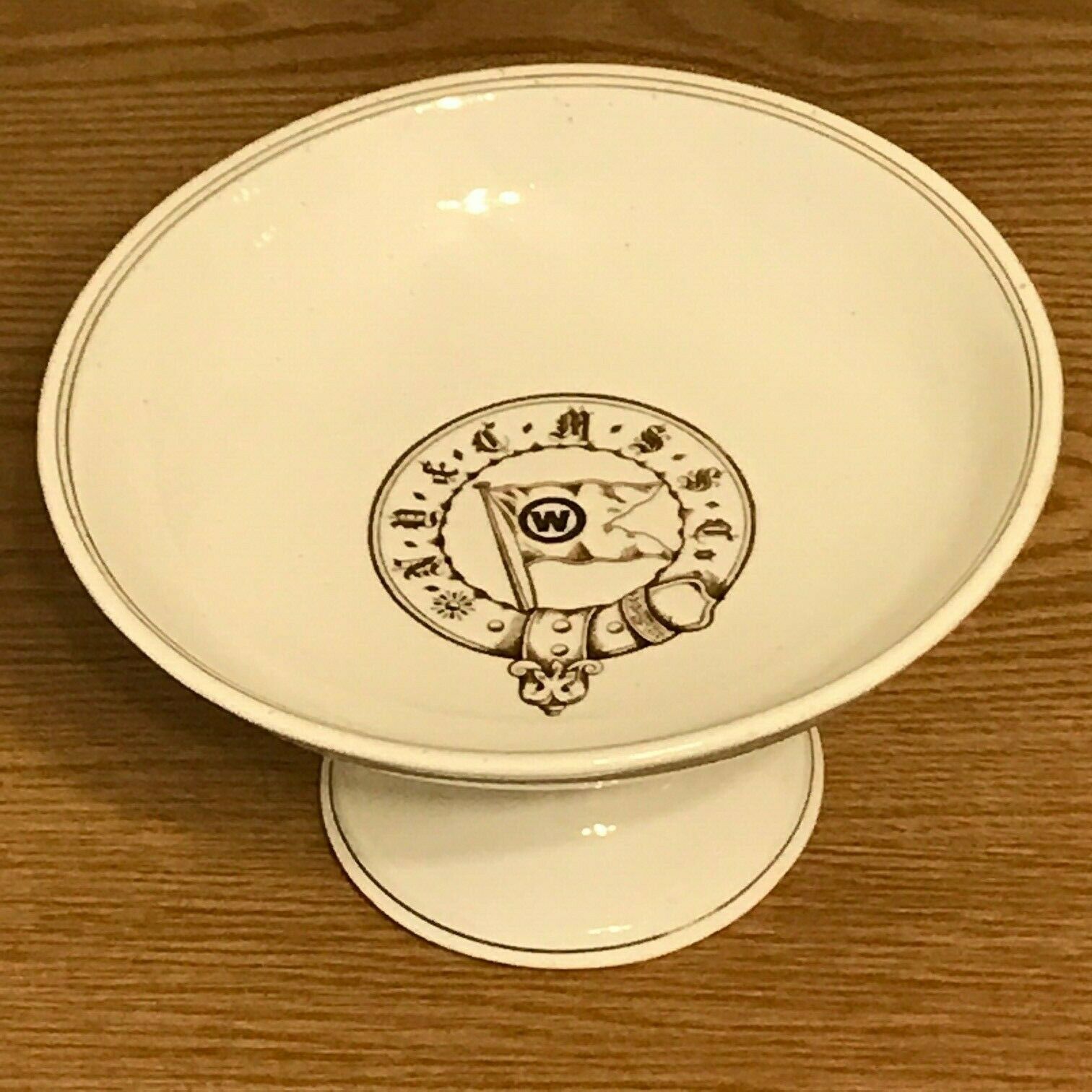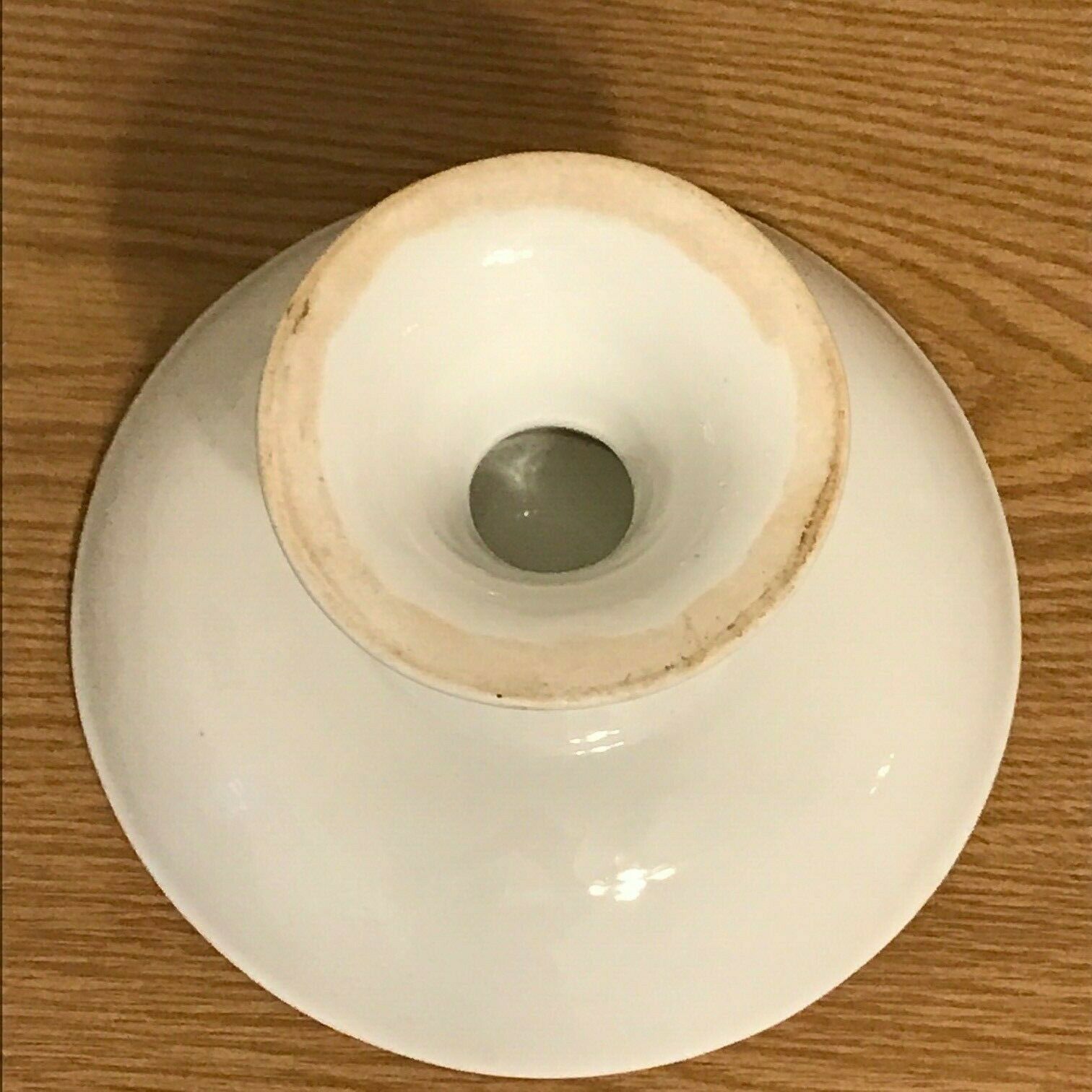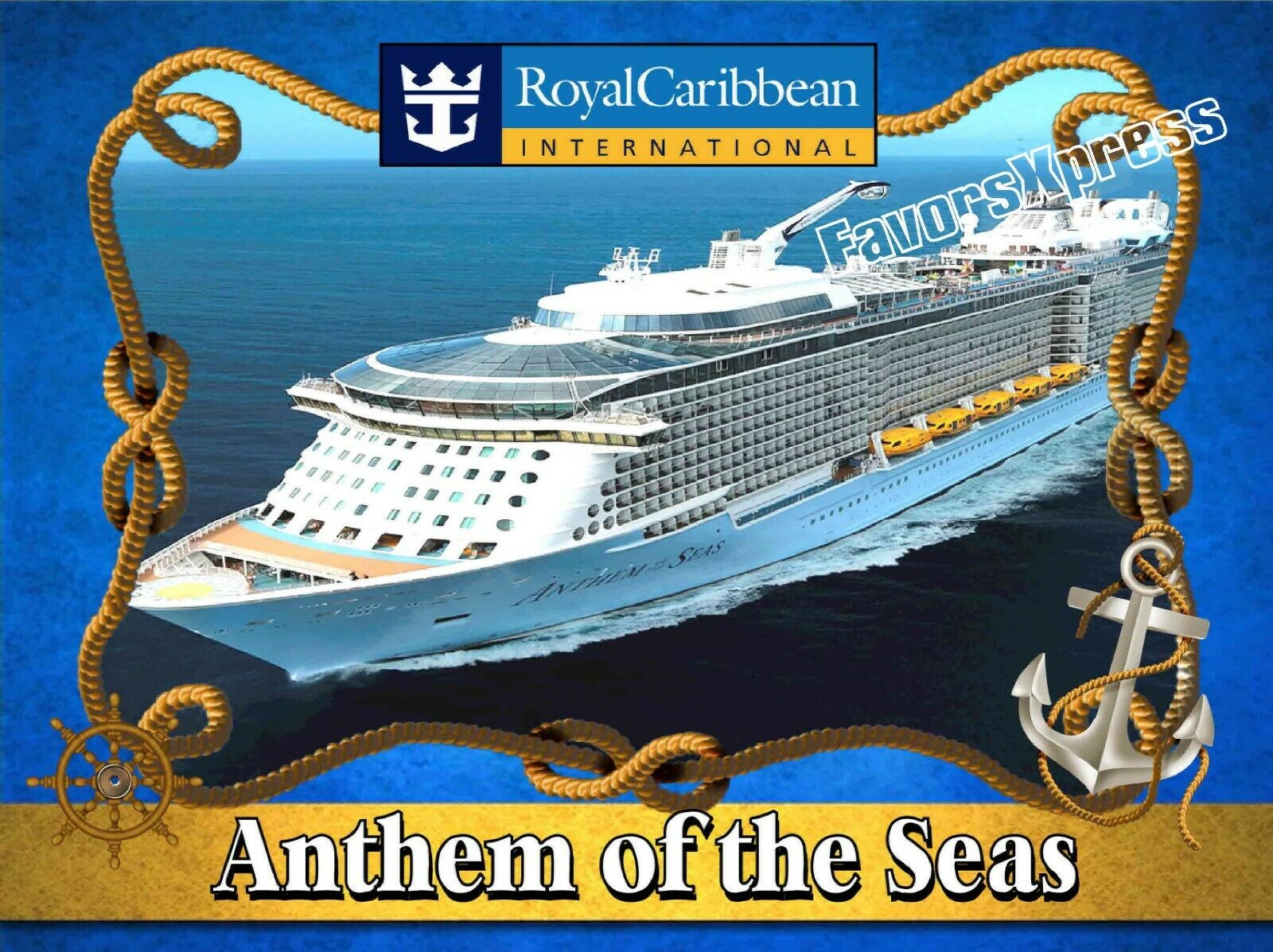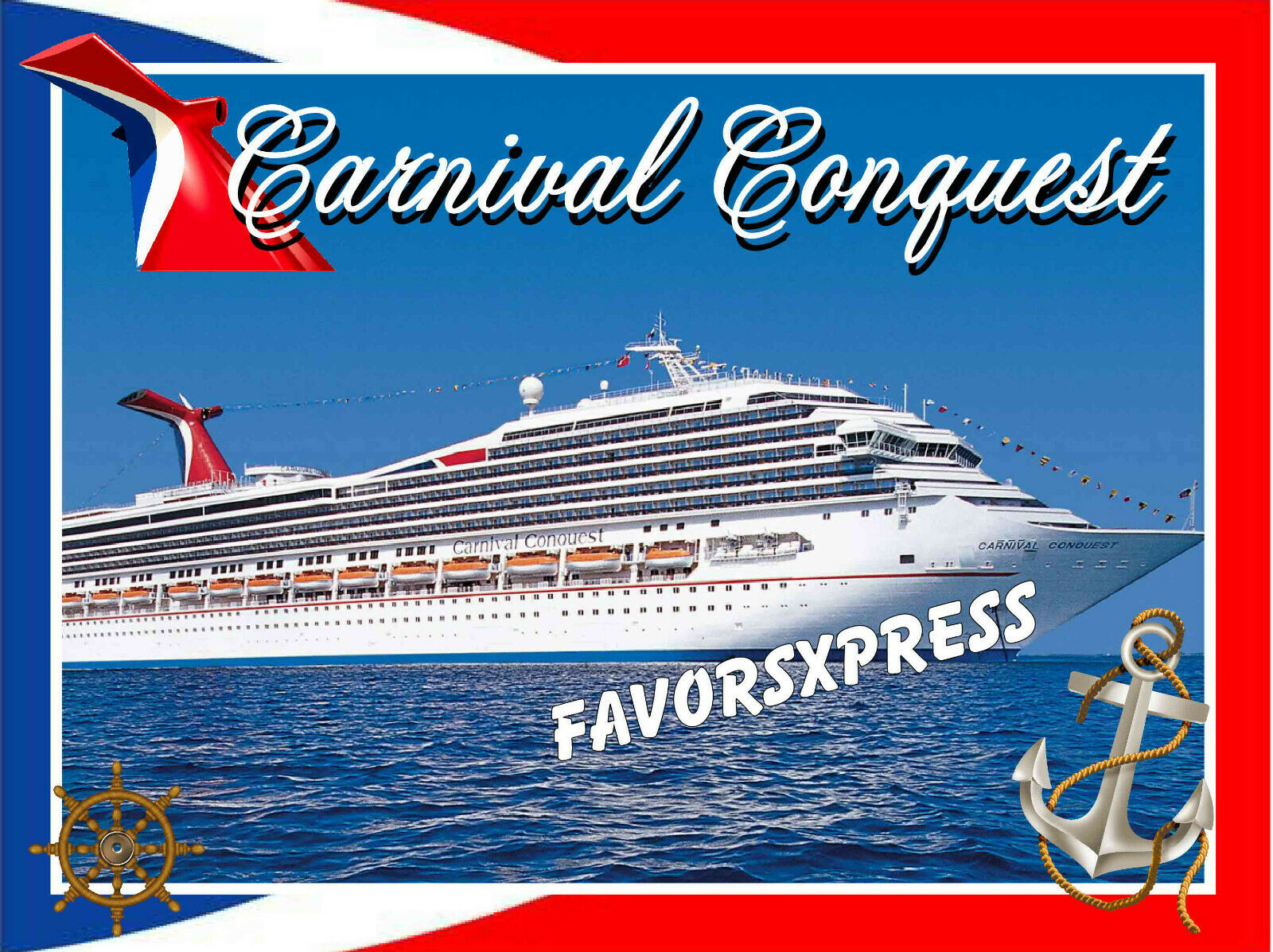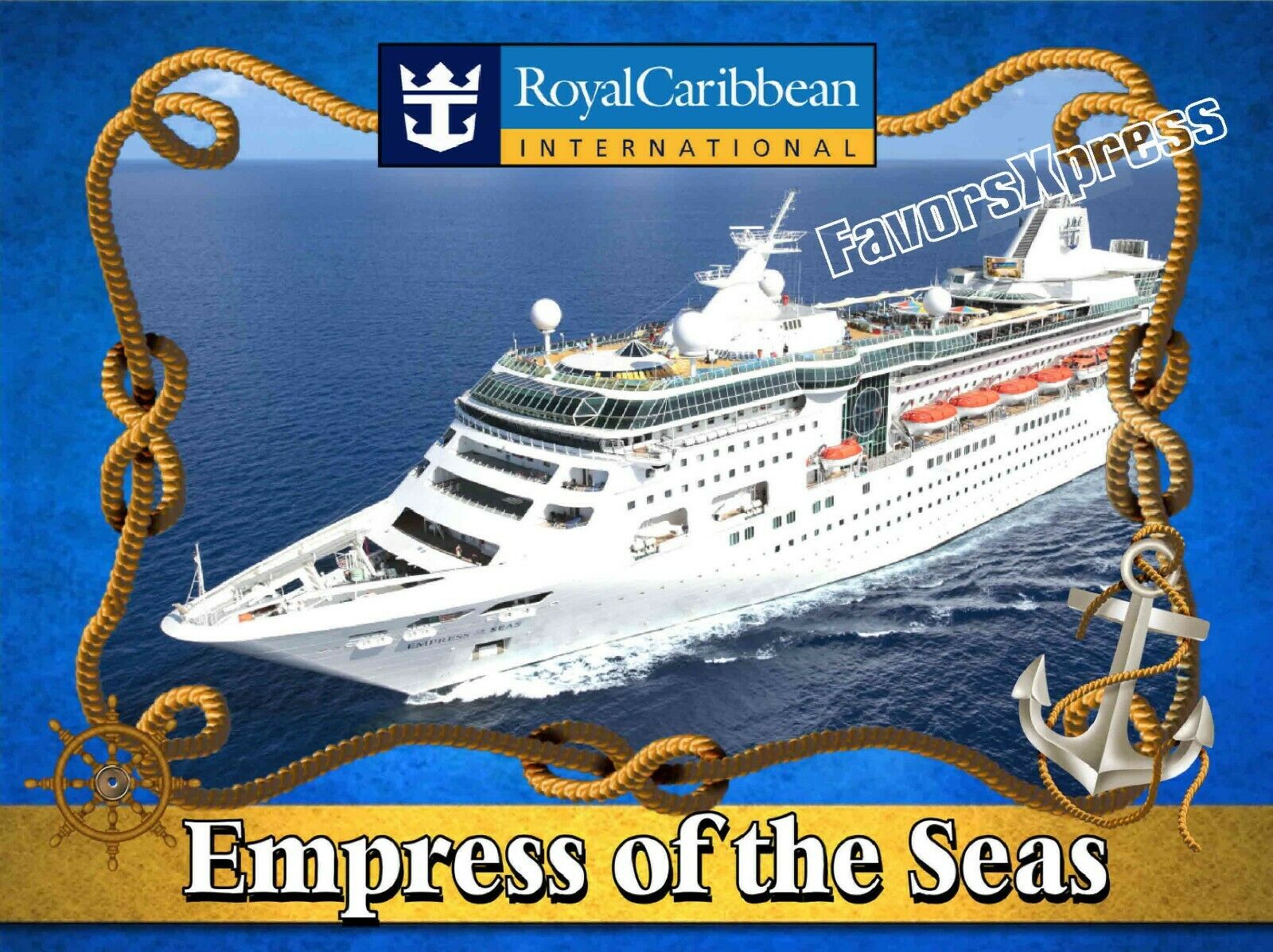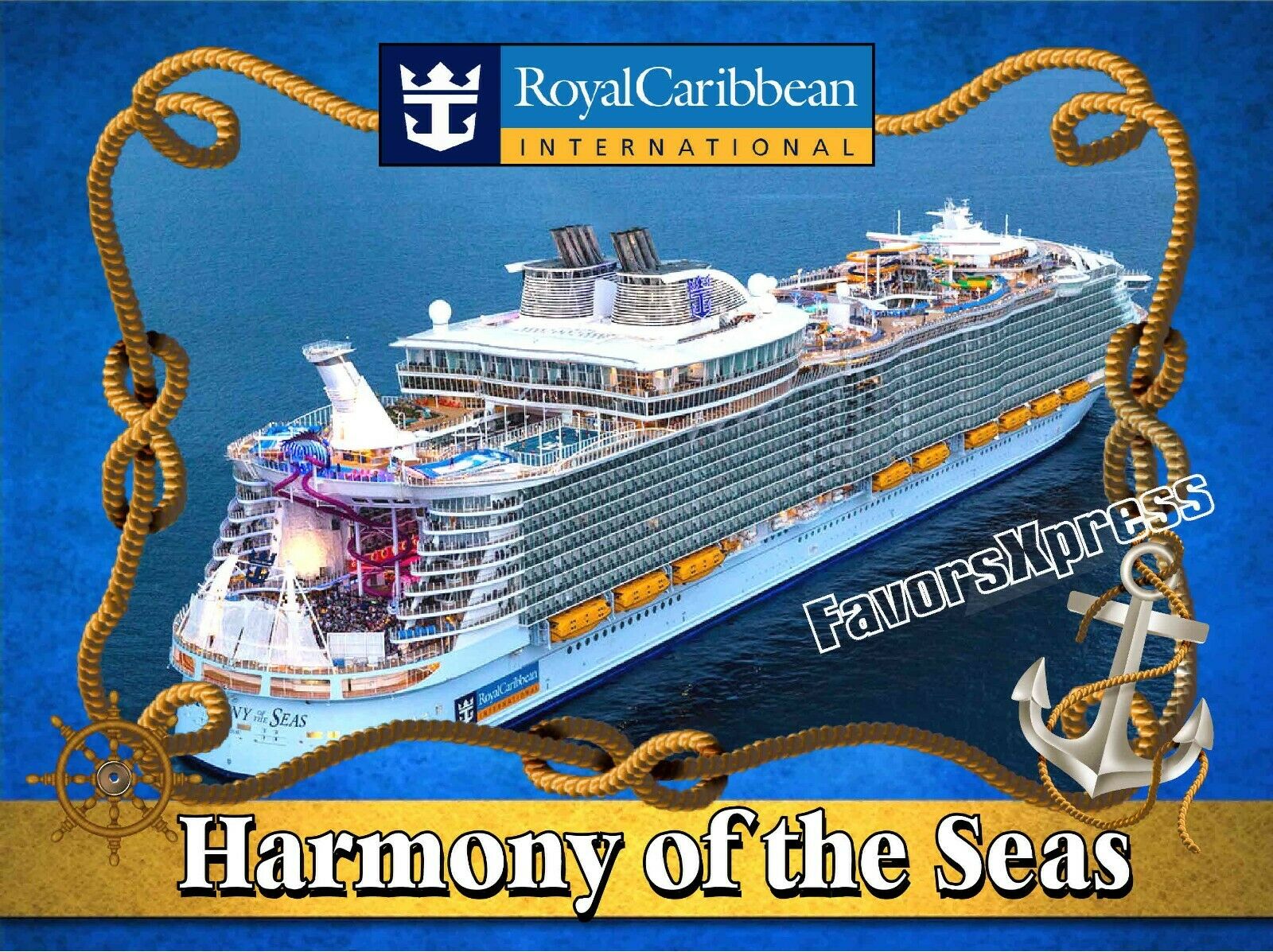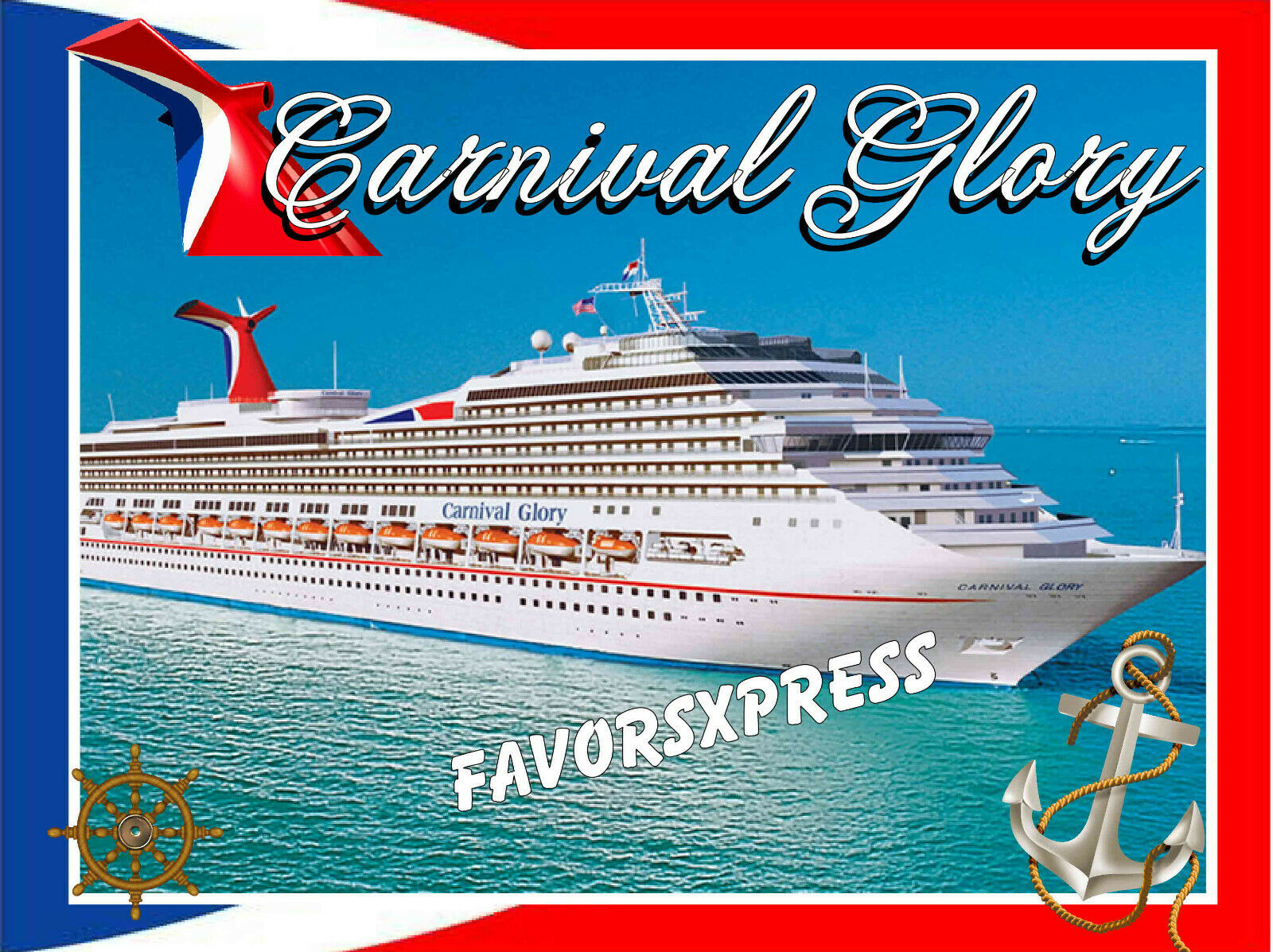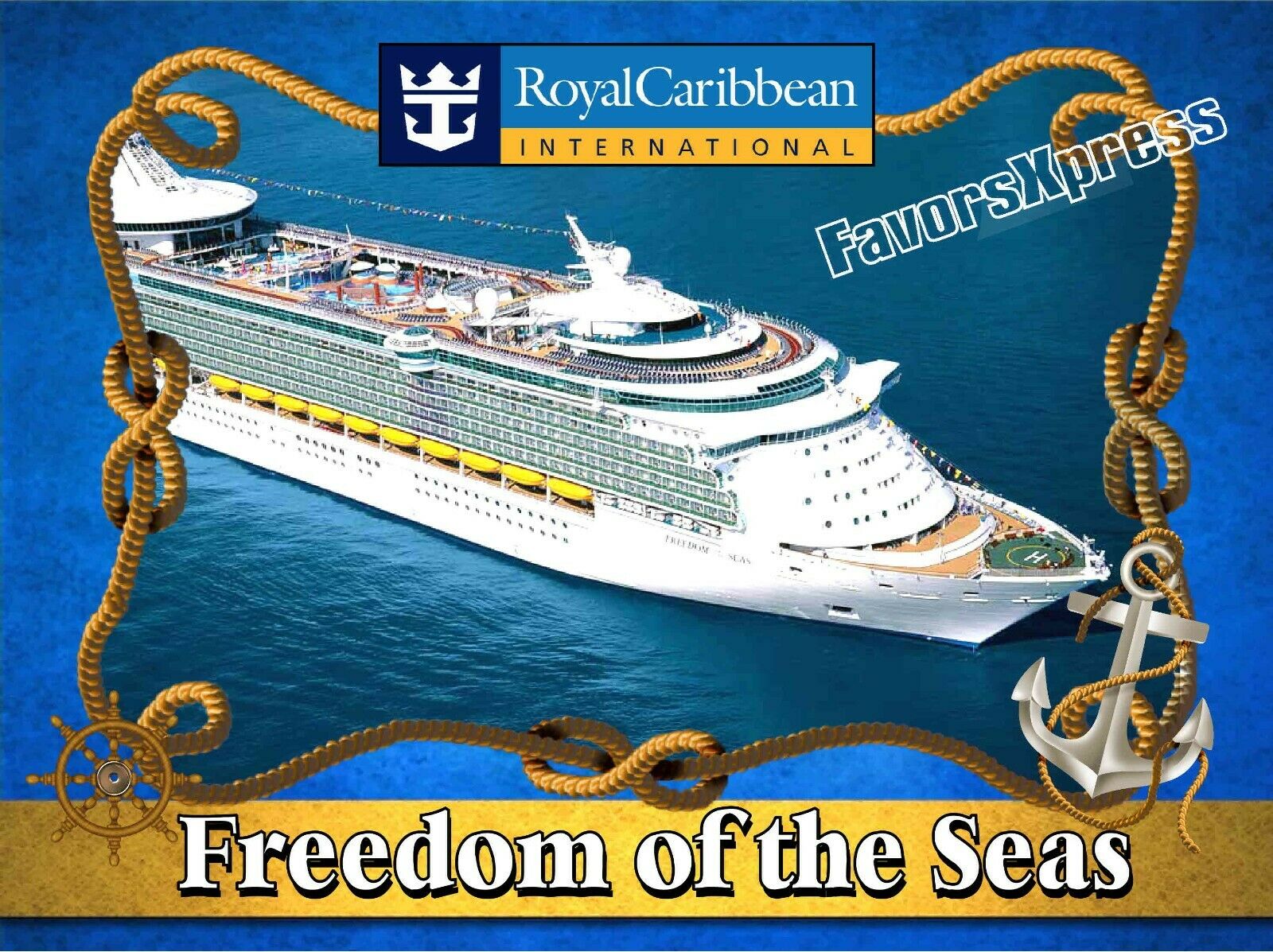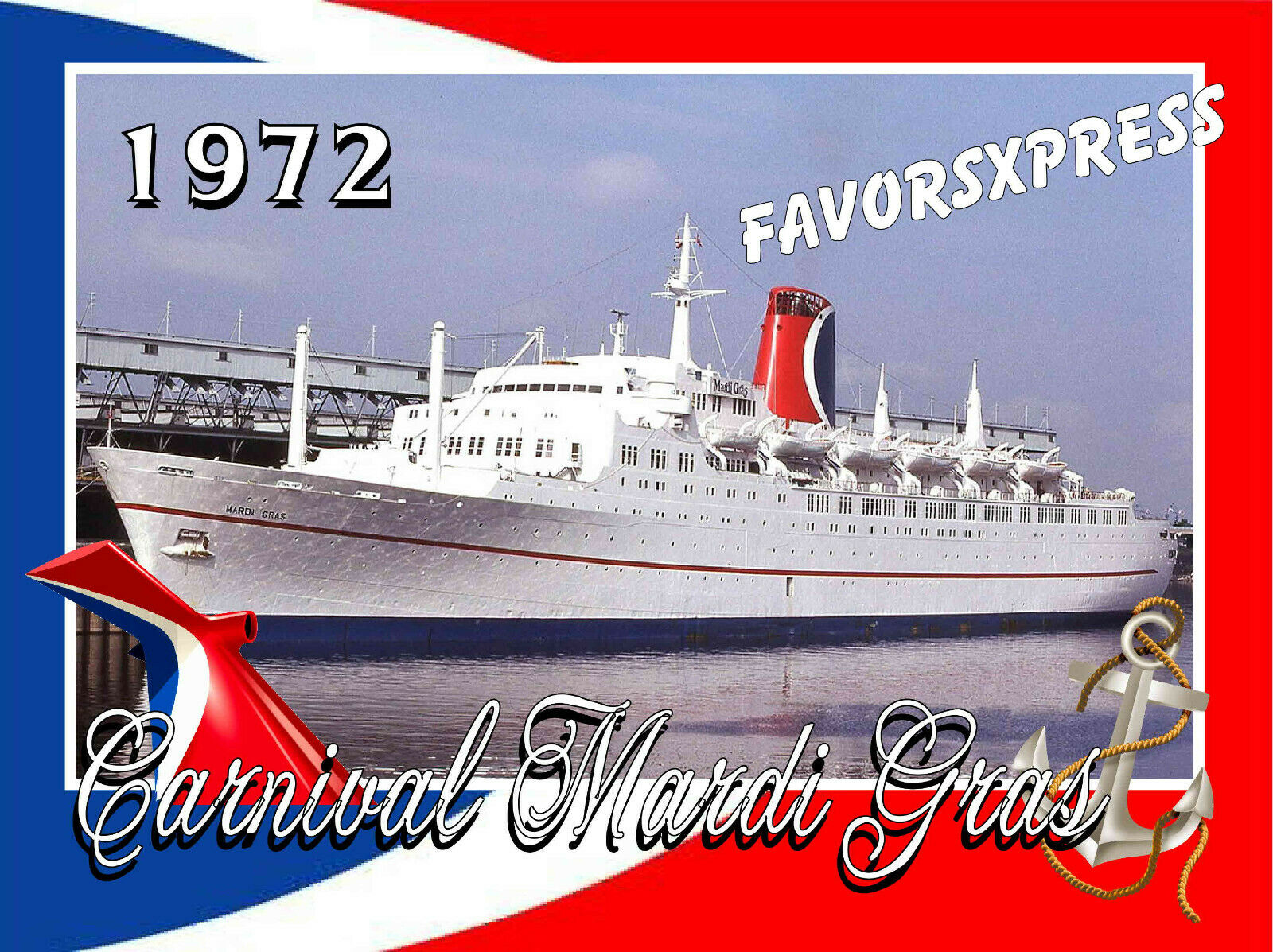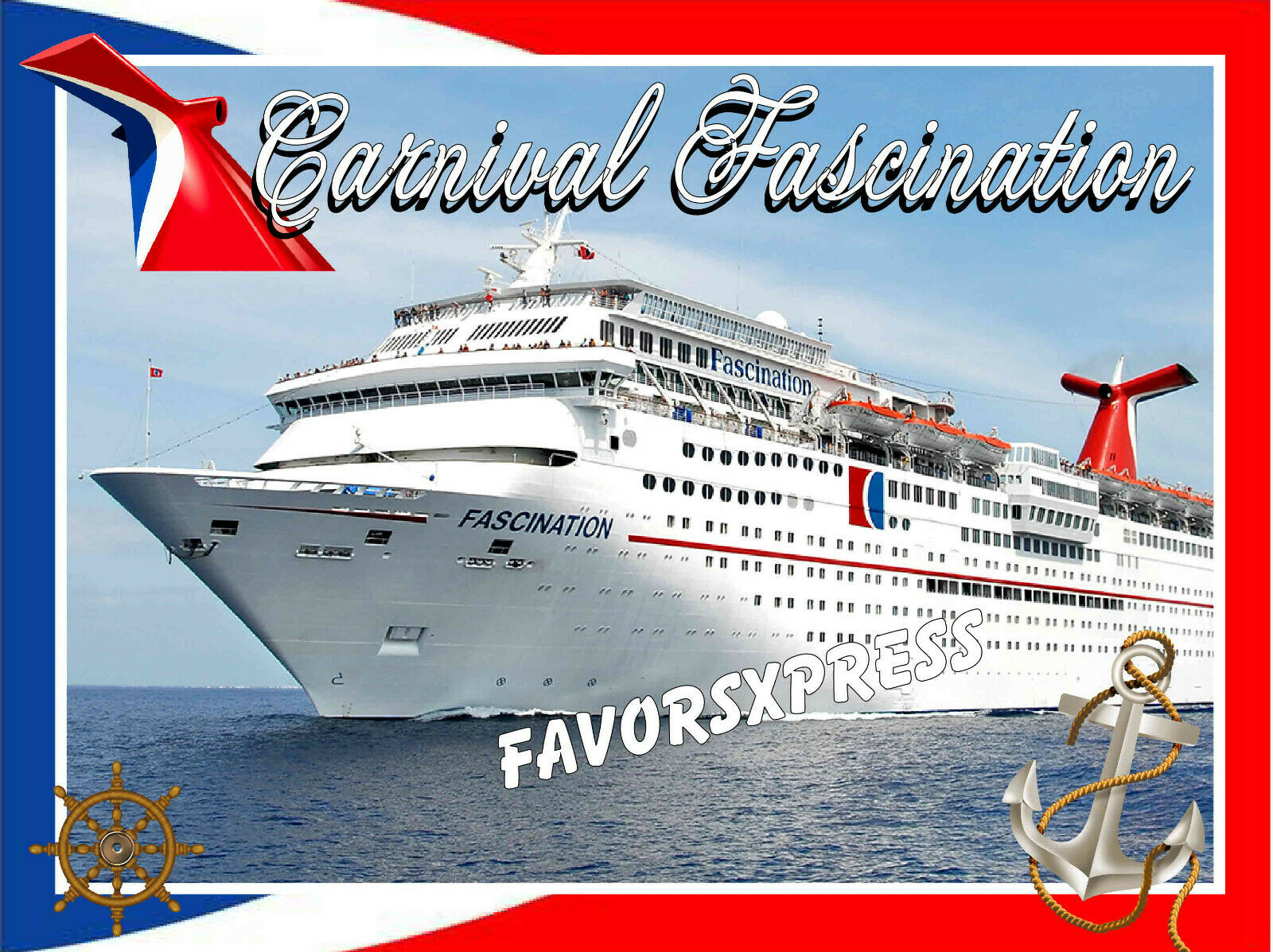-40%
WARD LINE - NEW YORK & CUBA MAIL STEAMSHIP COMPANY COMPOTE - CHINA - RARE DISH
$ 211.19
- Description
- Size Guide
Description
This listing is for a vintage Ward Line, New York & Cuba Mail Steamship Co. Compote. The compote was made the Greenware? China Co. Inside the compote is a transfer of round belt pattern with the initials N.Y. & C.M.S.S.C. In the center is a swallow tail flag with a brown "W" inside a brown ring. The Ward Line was formed by James E. Ward in 1856 as a cargo and passenger service using sailing vessels. When the line began shifting to steam after the civil war it officially became the New York & Cuba Mail Steamship Company, but was always known as the Ward Line. It measures approx. 4.75" h x 8.75" diameter. In good condition with no chips, or cracks. See photo's, email with any questions. Shipping is usps priority.The
New York and Cuba Mail Steamship Company
, commonly called the
Ward Line
, was a shipping company that operated from 1841 until liquidated in 1954. The line operated out of New York City's Piers 15, 16, and 17—land which later became the site of the
South Street Seaport
and also the Manhattan terminal of the IKEA-
Red Hook
ferry route. The company’s steamers linked
New York City
with
Nassau
,
Havana
, and
Mexican
Gulf
ports. The company had a good reputation for safety until a series of disasters in the mid-1930s, including the
SS Morro Castle
disaster. Soon after, the company changed its name to the
Cuba Mail Line
. In 1947, the
Ward Line
name was restored when service was resumed after
World War II
, but rising fuel prices and competition from airlines caused the company to cease operation in 1954.
Contents
1
History
1.1
Later incarnations
2
List of ships
3
References
History
[
edit
]
The Ward Line evolved from the freight consignment company established by James Otis Ward in New York in 1841. After Ward's death in 1856, his son James Edward Ward took over and expanded the company, eventually incorporating under the name New York and Cuba Mail Steamship Company in 1881. In 1888 the company bought out its main competitor on the Cubans routes, the
Alexandre Line
, in the process acquiring all of Alexandre's ships, property, and its Mexican freight contracts and subsidies.
Upon James Edward Ward's death in 1894, control of the company passed to
Henry Prosper Booth
. In 1897, the Ward steamer
Valencia
was purposely attacked by the
Spanish cruiser
Reina Mercedes
off
Guantánamo Bay
, which fired two shots at the steamer. The
Valencia
was chartered from the
Red D Line
to serve a route from
New York City
to
Nassau, Bahamas
while visiting small Cuban ports along the way. It was later reported the
Reina Mercedes
was well aware of
Valencia's
identity and had fired the shots so as to intimidate the smaller steamer to raise her colors.
[1]
In 1898 all of the Ward Line ships were requisitioned for United States military use during the
Spanish–American War
. Increased demand for passenger and freight service helped the line modernize its fleet and become a leader in the
coastal trade
.
Atlantic, Gulf & West Indies Steamship Lines (AGWI) advertisement 1921 showing four component lines.
In 1907
Consolidated Steamship Lines
, a shipping conglomerate of
Charles W. Morse
, bought the Ward Line for a large sum. When that company went bankrupt the following year, the former subsidiaries of Consolidated, including the Ward Line, joined forces to form the
Atlantic, Gulf & West Indies Lines
(Agwilines) holding company. Common resources were pooled, but each company maintained its own management.
During
World War I
, two of its newest liners,
SS
Havana
and
SS
Saratoga
, and two new liners under construction,
SS
Siboney
and
SS
Orizaba
, were requisitioned for government use.
Saratoga
and
Havana
became
United States Navy
hospital ships
Comfort
and
Mercy
, respectively;
Sibony
and
Orizaba
became
troop transports
under their original names. All but
Saratoga
/
Mercy
eventually returned to the line after the war.
In the 1920s, service reductions, poor management, and rehabilitation of its aging fleet nearly bankrupted the company, but subsidies from the United States government helped to resuscitate the company. In 1929 government financing help the Ward Line build two new luxury liners,
SS
Morro Castle
and
SS
Oriente
. With two of the newest liners in the
Merchant Marine
and relatively low fares, the company was able to weather the early years of the
Great Depression
relatively well.
In 1934, the Ward Line's reputation for safety at sea suffered a major setback. On September 8, 1934,
Morro Castle
caught fire killing 137, a tally that is still the highest death toll of any U.S.-flagged merchant ship. In the months that followed the company suffered a series of further
public relations
disasters.
Havana
ran aground near the
Bahamas
in January 1935, and
SS
Mohawk
a ship chartered by the Ward Line to replace
Havana
, sank on its initial voyage the same month. The
Ward Line
name was dropped in favor of
Cuba Mail Line
to help put these disasters behind the company, but it never truly recovered.
In 1942 all of the company's remaining passenger liners were requisitioned by the government for use during
World War II
, none of which were returned to the company. In 1947, Agwilines resurrected the
Ward Line
name for limited passenger service on converted World War II freighters. This reduced service lasted until 1954, when Agwilines was liquidated as a result of rising fuel prices and competition from airlines.
Later incarnations
[
edit
]
In 1955, the
Ward Line
name was purchased by Thomas Stevenson who operated foreign-flagged freighters under the
Stevenson Lines
name, but as Stevenson's company diversified, it moved away from the shipping industry. In 1955,
Companñía Naviera García
, a Cuban steamship company, bought the Ward name and ran its company under the name
Ward-García Line
. Ward-García lasted only until 1959 when declining demand and the
Cuban Revolution
ended its service.
